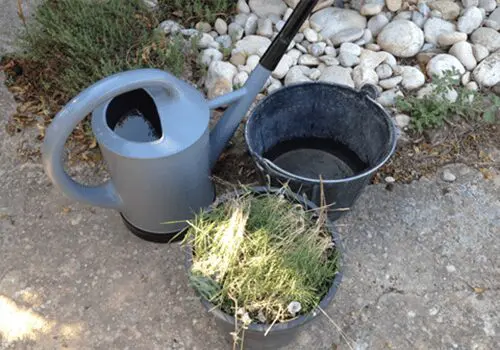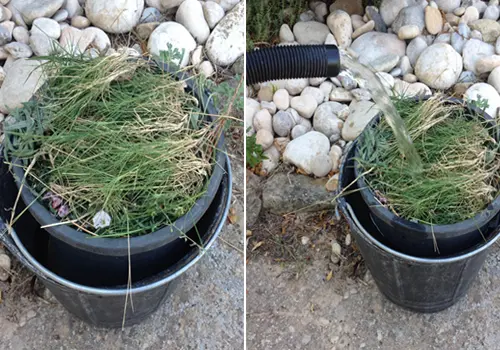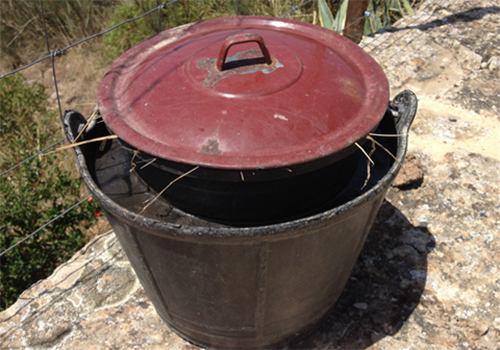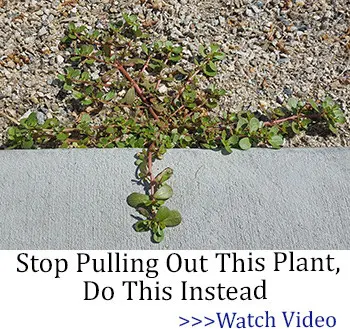There are some weeds that are more troublesome than others. Thistles and wild oats, for example, die off and break down easily in the compost, but others, such as some running grasses and vines, can be persistent little buggers and may resprout in the compost in milder climates and seasons.
This is where weed tea comes in handy because essentially you drown the weeds first for 4 weeks, then they are harmless on your compost, no matter the season or climate. And not only do you solve your compost problem, but the water you drowned the weeds it is a natural, homemade liquid fertilizer. Gardener 2: Weeds 0.
Fair Warning
By the second week, this stuff stinks. Essentially you are rotting down vegetation in the water, making an anaerobic reaction, which means a very strong smell of sulfur, a.k.a rotten egg. For this reason, many people in small gardens use a bucket with a lid to reduce the smell, but if this is the case, you will have to pop the lid every day or so to release the gas that is being created by the bacteria and other microbes, just like you would when fermenting vegetables.
Other than the smell, the only other downside about making your own weed tea fertilizer is that you don’t know what your NPK ratios are. Of course, you can buy at-home test kits which can give you a rough estimate, but take these with a grain of salt. One study showed that the NPK ratios, when averaged and rounded up, are about 3-7-4, with nitrogen being the biggest variable.
What Plants To Use In Weed Tea
Focus on collecting live, green vegetation, as this will break down quicker. Avoid leaves that are waxy or tough. I usually throw in kikuyu and couch grass as well as convolvulus, since they can take off in the compost if they aren’t thoroughly covered or lie exposed to the hot sun to bake on the top of the pile.
But as long as the vegetation is alive, then you really can use ANY plant.
Method
Cut or tear up the vegetation into approximately 5 – 10 cm pieces. The smaller you make the pieces, the quicker it breaks down and the more nutrients are released into the water.

Place the vegetation in a normal pot that fits neatly inside a bucket. The pot will act as your strainer later.
With your pot of vegetation sitting in the bucket, fill the bucket with water.

Place the lid on or cover it loosely to reduce odors and evaporation. You can cover it with a plastic bag, but I didn’t have one big enough this time, so I just used an old lid.

You can place the bucket in full sun to speed up the process. Also, you may need to top up the water about once a week or so, depending on how airtight your bucket is and how hot it gets.
After 25 – 30 days, the weeds have degraded and are completely dead, while many of the nutrients have been released into the water, especially the water-soluble ones. The remaining cellulose and plant matter can be strained off by simply lifting out the pot and throwing its contents on the compost without the risk of re-sprouting. It’s a win-win situation – except for the weeds!
Application
Weed tea should ALWAYS be diluted, even on “hungry” plants. Just like essential oil is good for us, we still need to dilute it to use it safely. The same goes for weed tea.
As a very rough guide, I try to aim for about 1 part weed tea diluted with 100 parts water. This equates to about 5 tablespoons of weed tea per 8 liters of water. This is based on the average NPK being about 3-7-4. I know others recommend a dilution rate of 1-part tea to only 10-parts water, but I feel like this is too strong, especially in a root-bound pot where there is very little dead organic matter left in the soil and the potential for leaching is greater.
Related: The One Tree That Every Homesteader Should Plant
I personally use weed tea on my pots, especially the ones that are getting a bit cramped and are struggling because I didn’t plant them in the ground before it got too hot. You know the ones; the pots where you can’t add any compost to the top because they are bursting already.
I also like to use weed tea on my veggies when they start flowering and again when they finish flowering since I know that the weeds I’m using don’t contain any insecticides or herbicides. If you have doubts about any residues from pesticides, then don’t use it on any plants you intend to eat, use it on your other plants instead.
When it comes to raised beds and larger containers, I personally wouldn’t bother with weed tea. You will have a better outcome by throwing a layer of mature compost (or wood chips) around these areas since this will not only give you NPK, but also add organic matter which will retain moisture better, and potentially increase your soil pH. And you can add all the extra microbes and bacteria that you want to your soil, but without the addition of extra organic matter as well, they essentially starve to death.
Conclusion
You can technically use your weed tea anywhere, but unlike compost and wood chips, the nutrients present in weed tea are only temporary; those that aren’t taken up by the roots will eventually leach out of the pot, and potentially end up in our waterways. So don’t be too heavy-handed when dishing out your diluted weed tea and only fertilize when it’s necessary.
This post first appeared on The Lost Herbs.
You may also like:
Plant This Vegetable Once and Harvest it For 30+ Years
These Are The Antidote Plants Which Grow Near Poisonous Ones (Video)
Gardening Mistakes That Might Get You Killed
50 Off the Grid Homesteading Tips and Tricks
Livestock Animals You Should Start Raising For The Upcoming Economic Crisis










Great article. Thanks. Will be doing this with my weeds.
thanks, will try making weed tea.